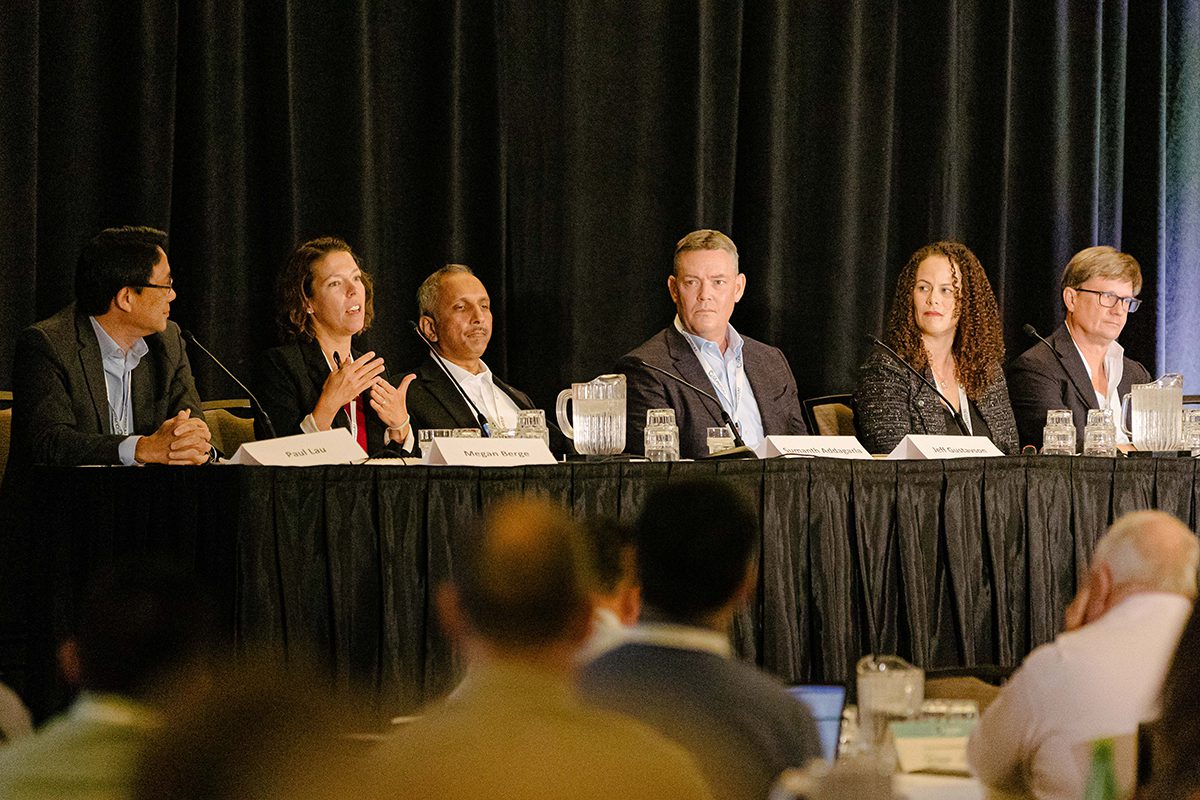Hydrogen is heating up as a policy topic, as evidenced by the project updates, new bills, and solutions offered by elected leaders, industry leaders, and the more than 350 attendees at the 2022 California Hydrogen Leadership Summit, which took place in Sacramento, California, in early June.
The summit took place as the U.S. Department of Energy released a widely anticipated Notice of Intent (NOI) to invest $8 billion in hydrogen hubs across the country. Exploring California’s response to the NOI, summit speakers outlined the importance of hydrogen to help address climate change, improve air quality, and decarbonize otherwise difficult sectors such as long-haul trucking, cargo handling, power generation, and heavy industries such as steel and cement, as well as serving as a method to store vast amounts of renewable energy.
California State Senators Nancy Skinner (District 9) and Josh Newman (District 29) both spoke about pending legislation they are spearheading:
- SB 1075 (Skinner) supports more production and broader use of hydrogen, provides related funding, directs California Air Resources Board (CARB) to develop a roadmap to accelerate production and use, and makes hydrogen integral to climate planning.
- SB 1329 (Newman) recognizes the need for widespread fuel cell electric vehicle adoption by supporting an expansive hydrogen fueling network.
Ballard’s Tim Sasseen added to the fueling station discussion by suggesting the state help with temporary fueling infrastructure to support rapid expansion of hydrogen fueling. Nikola’s Ryan McGeachie agreed that speedy station development is essential because hydrogen trucks are currently being piloted throughout the state, noting that the HVIP incentive should continue to support larger truck fleets because they are essential to hydrogen’s success and statewide emissions reduction.
Less Color, More Real Metrics
There was support from many speakers for scrapping the “color wheel” to describe the feedstock of hydrogen because, they argued, the carbon intensity of hydrogen production is a better metric to assess the decarbonization potential of a fuel. Once carbon intensity is calculated, producers can then work to meet those targets within their hydrogen production technologies, resulting in a glidepath to cleaner fuels.
California Energy Commission (CEC) Commissioner Andrew McAllister also supported a tagging system for carbon content in hydrogen that would both track it and create accountability, similar to Renewables Portfolio Standard (RPS) accounting for electricity generation.
Brian Goldstein of Energy Independence Now agreed and noted that the RPS started with attainable percentage targets for renewable content and the target has been increased as goals were successfully met.
DOE’s Hydrogen Hub
GO-Biz Deputy Director Tyson Eckerle said his office is working on the strategy related to the DOE Hydrogen Hub and is asking producers, consumers, and projects to submit information to the Hub form. Eckerle pointed to the ports as a critical end user for hydrogen in California’s concept for a hydrogen hub. Goldstein agreed, “We have about 20,000 trucks serving the ports of LA and Long Beach, plus tugboats, cargo handling equipment, hoteling for ship crews, and there are fuel refineries nearby, so we can impact a range of industries in that geography.”
Projects
Alberto Ayala with Sacramento Metro AQMD highlighted an FCEV switcher locomotive demonstration at Port of Sacramento, a wastewater processing plant being developed to turn biogas into hydrogen, and a carshare partnership with Toyota using the Mirai. Senator Skinner noted that Spain is rolling out electrolyzers to produce green hydrogen, Australia has initiated green hydrogen production, and in Los Angeles, SoCalGas has suggested a dedicated green hydrogen pipeline to displace three million gallons of diesel fuel per day. Several speakers pointed to the proven successes with public transit providers in California such as AC Transit running on hydrogen.
RNG as a Hydrogen Carrier, Fuel
Renewable Natural Gas (RNG) from landfills and other resources can be developed as part of the hydrogen economy, according to Archaea’s Whit Martin. Several speakers discussed the potential to blend hydrogen into the natural gas lines to reduce emissions, and hydrogen can also be separated from natural gas streams at high purity, although most agreed that testing and validation of blending is needed before that solution is deployed at scale.
Grid Resilience and Storage
PG&E’s Janisse Quiñones looked at the long-term storage potential for resilience, namely, hydrogen as a solution to support greater dispatch of power during peak use in summer, by banking power (storing hydrogen) during the spring. Panelists noted that one place to store it is being investigated by Project SHASTA, which is evaluating the use of depleted natural gas reservoirs.
Resilience planning has led to an uptick in purchases of diesel backup generators in areas subject to public safety power shutdowns, but diesel “is at such odds with our goals,” said Don Boyajian of Plug Power. Hydrogen powered fuel cells are a clean, climate friendly alternative to diesel generators and, explained Boyajian, “the Budget Revise is an opportunity to address this.”
Policy Priorities
To sum up the policy discussion, Sara Fitzsimon from the California Hydrogen Business Council offered policy priorities for consideration. She agreed hydrogen’s carbon intensity can be a technical target that can help assess progress. She made a case for hydrogen to be added to resilience planning, emphasized build-out of hydrogen fueling infrastructure, and suggested a target of 200 fueling stations for heavy duty vehicles.
Fitzsimon closed the summit by saying the hydrogen economy is ready for deployment, and we need to work together now on the key issues to help realize that clean energy future.



